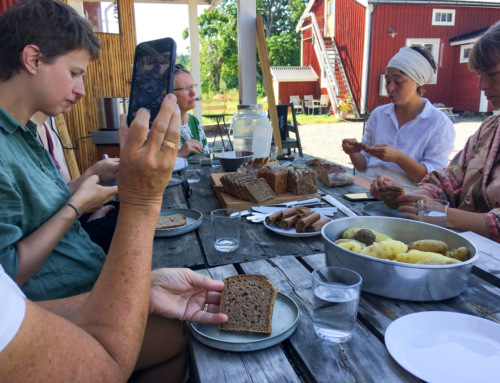The British government is in talks with supermarkets about emergency food reserves “in case the infrastructure of the country breaks down”. The exercise is being spun as a response to possible strikes by fuel tanker drivers, but the more likely explanation is that the precarious state of food systems as a whole has finally registered in mud-free Whitehall.
Persuading Tesco to stock 60 days supply of staple foods is of course better than the three days supply contained in today’s just-in-time systems. But sheds full of baked beans are not exactly a long-term solution. A more nutritious form of spin has been developed in the US. At the end of an interesting review of last week’s Growing Food for London conference, Roxanne Christensen writes about a franchise-ready sustainable farming system that can be deployed quickly and on a wide scale. That is the concept behind SPIN Farming. “SPIN”, Christensen explains (it stands for S-mall P-lot IN-tensive) “makes it possible to earn significant income from growing vegetables on land bases under an acre in size. SPIN farmers utilize relay cropping to increase yield and achieve good economic returns by growing only the most profitable food crops tailored to local markets”. SPIN’s growing techniques are not, in themselves, breakthrough, Christensen continues; what is novel is the way a SPIN farm business is run. “SPIN provides everything you’d expect from a good franchise: a business plan, marketing advice, and a detailed day-to-day workflow. In standardizing the system and creating a reproducible process, it really isn’t any different from McDonalds. SPIN-style farming removes the two big barriers to entry – sizeable acreage and significant start-up capital. By offering a non-technical, easy-to-understand and inexpensive-to-implement farming system, it allows many more people to farm”.




